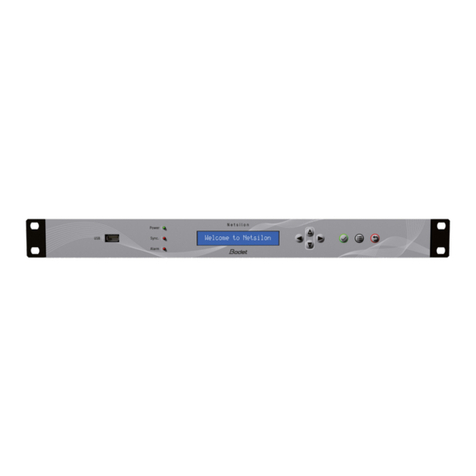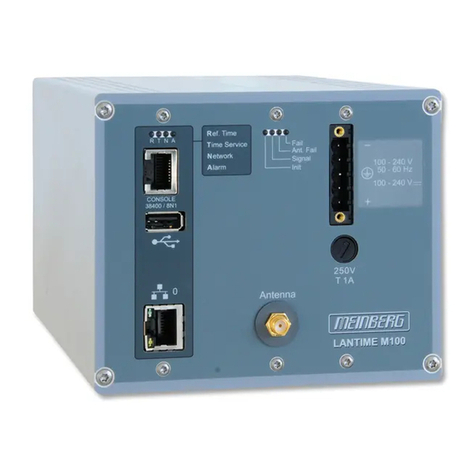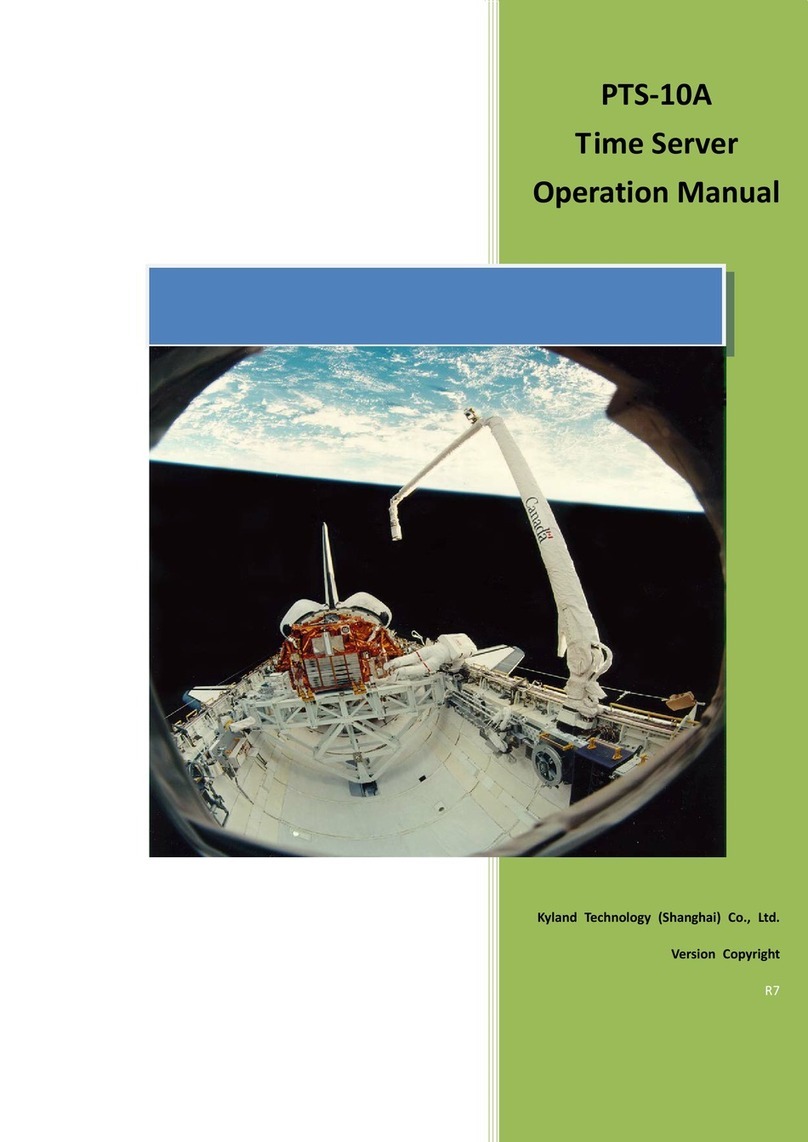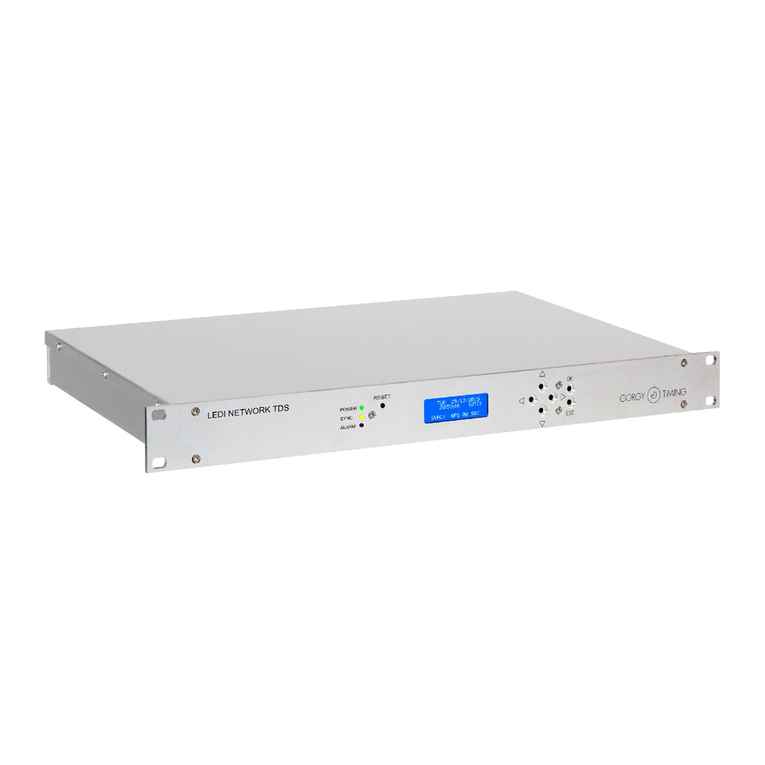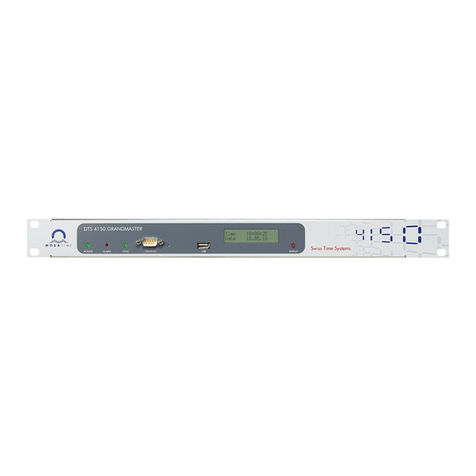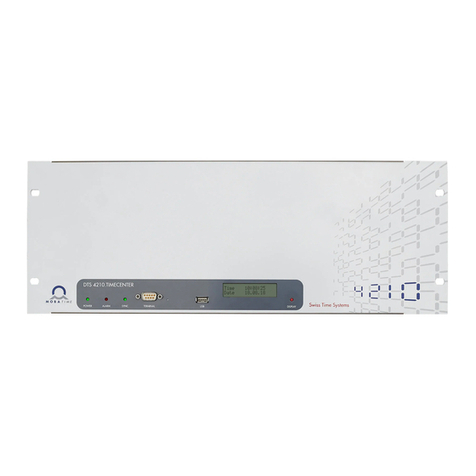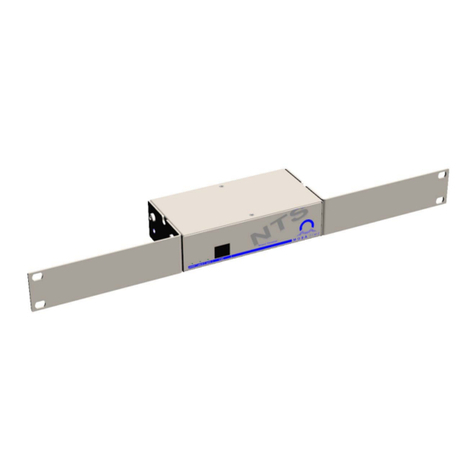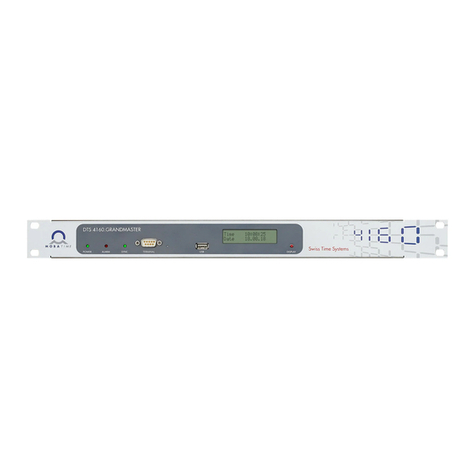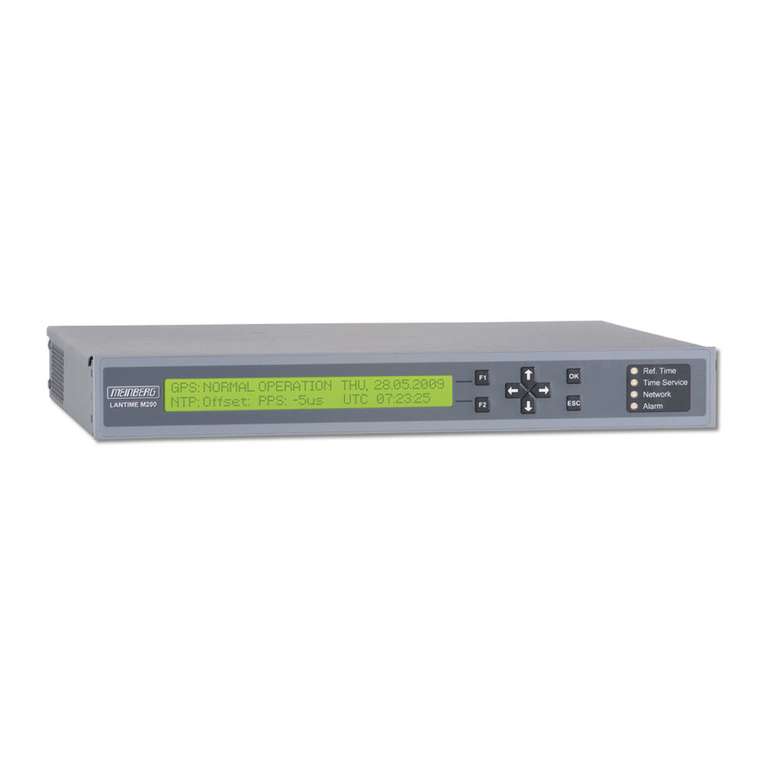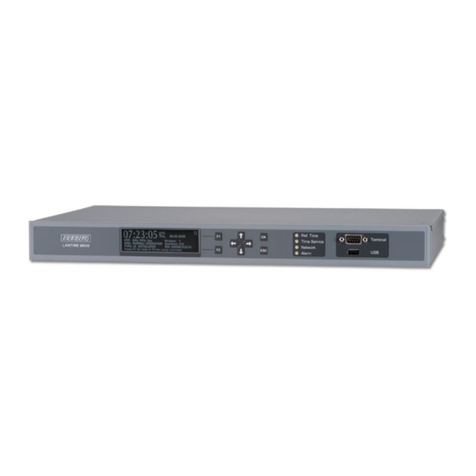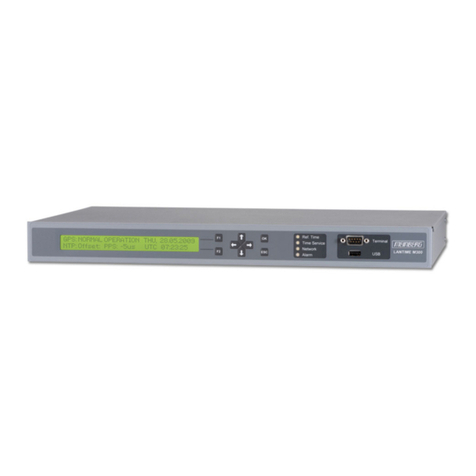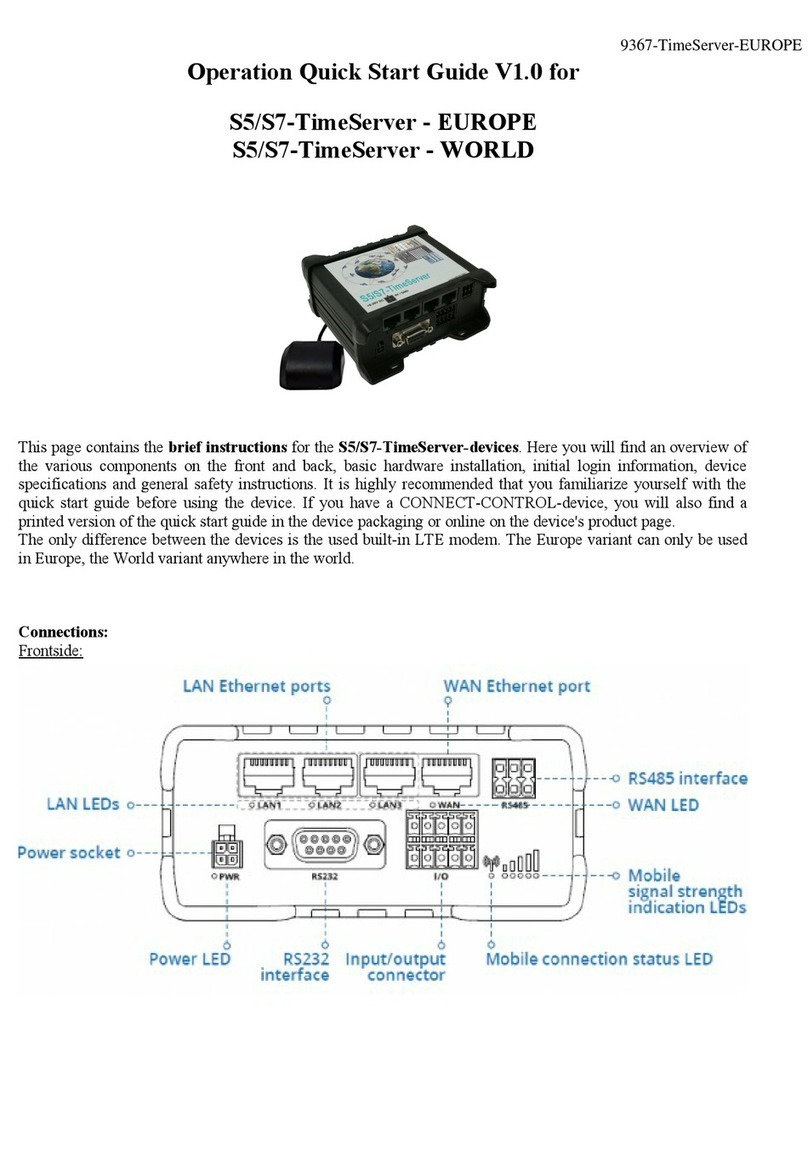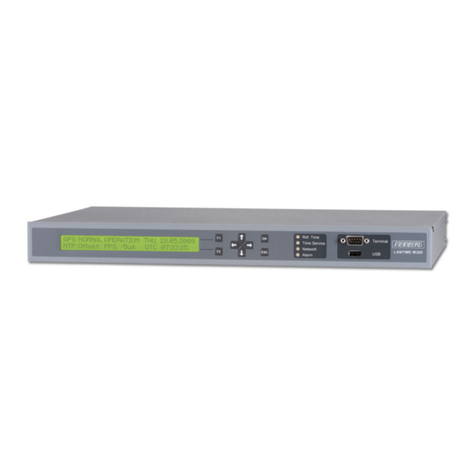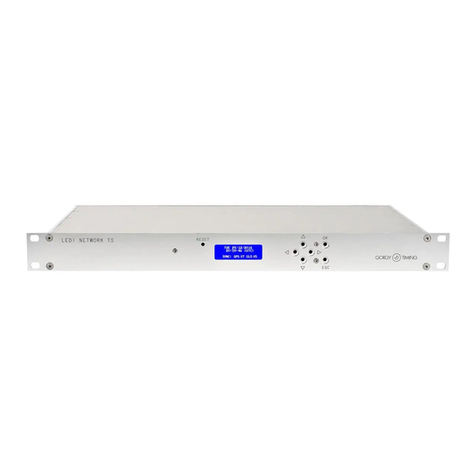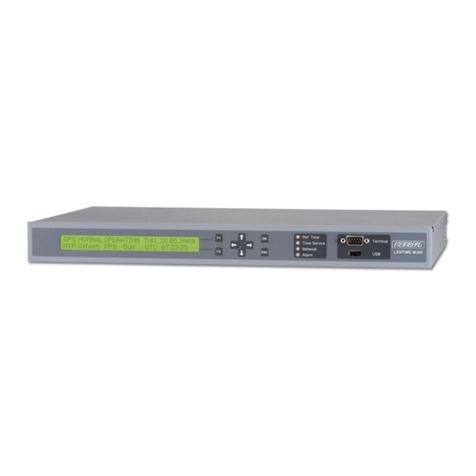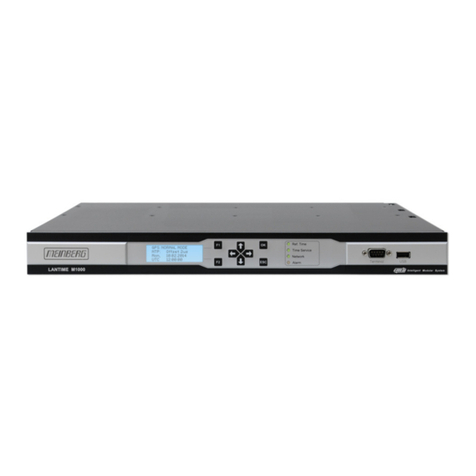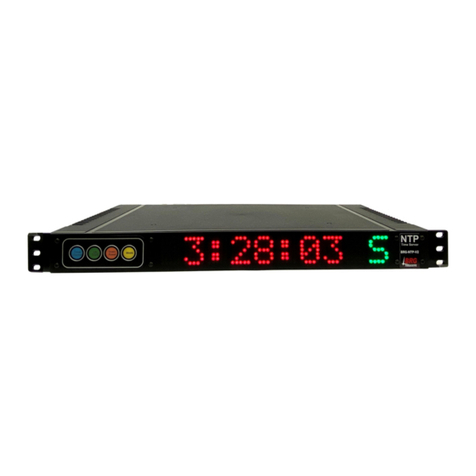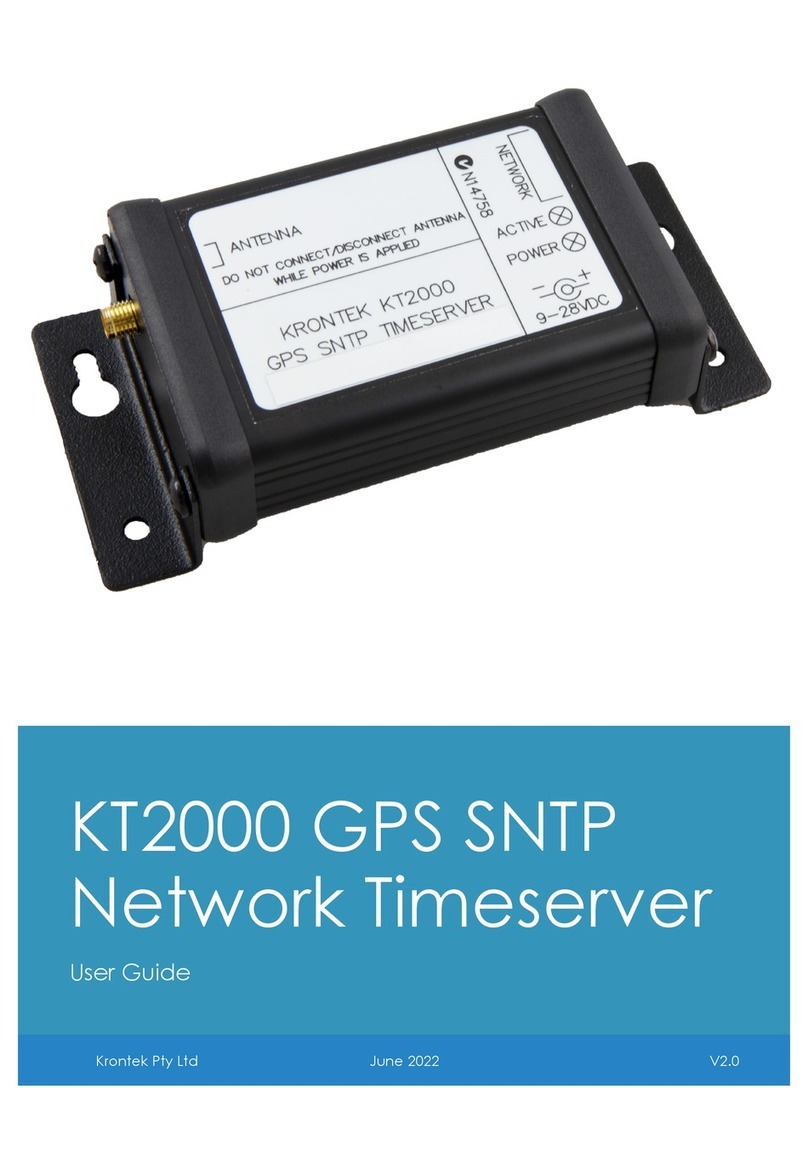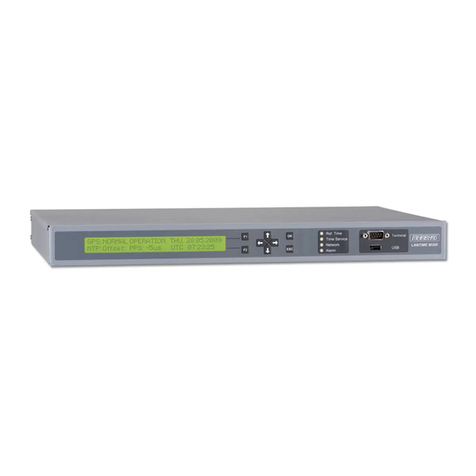
© MOBATIME 4 / 80 800847.05
Table of contents
1Safety............................................................5
1.1 Safety instructions....................................... 5
1.2 Symbols and Signal Words used in this
Instruction Manual....................................... 5
1.3 Intended Use............................................... 5
1.4 Observe operating safety!........................... 6
1.5 Consider the installation site!...................... 6
1.6 Please observe the electromagnetic
compatibility!................................................ 6
1.7 Network security.......................................... 6
2Maintenance..................................................7
2.1 Troubleshooting: Repairs............................ 7
2.2 Cleaning ...................................................... 7
2.3 Disposing..................................................... 7
3General Information: Introduction..................8
3.1 Scope of Delivery........................................ 8
3.2 Technical Data ............................................ 8
3.3 Introduction.................................................. 8
3.4 Device types................................................ 9
3.5 DTS distributed time system....................... 9
3.6 MOBA-NMS - Network Management
System ...................................................... 10
3.6.1 Overview of the main functions............................10
3.6.2 Device management............................................11
4Displays ......................................................12
4.1 LED displays ............................................. 12
4.2 LED indication back side........................... 12
5Installation...................................................13
5.1 Connections .............................................. 13
5.2 Boot procedure of the DTS
4128.timeserver......................................... 13
5.3 Firmware ................................................... 13
5.4 Basic settings (factory settings) ................ 14
6Operation ....................................................15
6.1 General...................................................... 15
6.1.1 Serial connection....................................... 16
6.1.2 Telnet ........................................................ 16
6.1.3 SSH........................................................... 16
6.1.4 Menu structure .......................................... 17
6.2 MOBA-NMS operation .............................. 18
6.3 Main menu................................................. 19
6.4 Status menu.............................................. 20
6.4.1 Time information and status...................... 21
6.4.2 Time source information............................ 22
6.5 Configuration menu................................... 23
6.5.1 Lines.......................................................... 23
6.5.2 DCF – output............................................. 24
6.5.3 NTP slave clocks / time zone server......... 25
6.5.4 Time administration................................... 26
6.5.5 Time source............................................... 27
6.5.6 Time-keeping............................................. 28
6.5.7 Redundant operation................................. 29
6.5.8 NTP server................................................ 30
6.5.9 Manual time set / Leap second................. 33
6.5.10Alarms....................................................... 34
6.5.11Alarm relay................................................ 34
6.5.12Alarm mask ............................................... 35
6.5.13E-mail.........................................................36
6.5.14SNMP traps................................................37
6.5.15General settings.........................................39
6.5.16Network......................................................40
6.5.17Services (network services FTP, telnet,
SSH...) .......................................................41
6.5.18SNMP.........................................................42
6.5.19SNMP V1 / V2c..........................................43
6.5.20SNMP V3...................................................44
6.5.21Time zone selection...................................47
6.6 Maintenance menu ....................................48
7Updates.......................................................49
7.1 Updating images with MOBA-NMS ...........49
7.2 Updating images with FTP.........................49
7.3 Updating applications or configurations.....50
7.4 FTP connection..........................................50
7.5 Save Configuration externally....................51
8Time administration.....................................52
8.1 Time acceptance .......................................52
8.2 Time acceptance from an external source
(DCF or GPS) ............................................52
8.3 Time acceptance from NTP.......................53
8.4 NTP as backup ..........................................53
8.5 Time server................................................53
8.6 Time accuracy, time-keeping.....................53
8.7 Leap second ..............................................53
8.8 Redundant operation of 2 DTS
4128.timeservers .......................................54
9SNMP..........................................................56
9.1 General ......................................................56
9.2 Device configuration with SNMP ...............57
9.3 DTS subagent SNMP notification..............57
9.3.1 Start up [dts4128StartUp] ...................................57
9.3.2 Shutdown [dts4128Shutdown] .............................57
9.3.3 Status changed [dts4128StatusChanged]............58
9.3.4 Configuration changed
[dts4128ConfigChanged].....................................58
9.3.5 Alive notification [dts4128Alive]............................60
9.3.6 Alarm notification [dts4128Alarm] ........................60
APPENDIX
AConnection diagrams...................................61
A.1 Front connections ......................................61
A.2 Connections (rear view).............................62
A.3 Plug-in spring terminals .............................63
A.4 Connection GPS 4500 or DCF 450 ...........63
BTime zone table...........................................64
CAlarm list......................................................66
DTroubleshooting...........................................68
ECopyright notice...........................................69
FTechnical data.............................................72
GIndex ...........................................................74
HConnection table (to fill in) ...........................76

